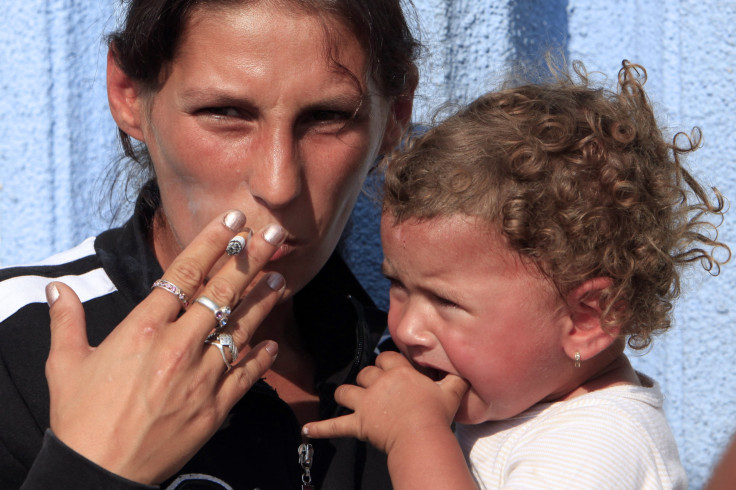Chronic Obstructive Pulmonary Disease More Likely In Middle-Age Kids Whose Mothers Smoke: Study

Chronic obstructive pulmonary disease (COPD) is a chronic lung condition that makes it difficult to breathe. More than 11 million people have been diagnosed with COPD, but more than twice that number, 24 million, may have it without knowing it, according to the American Lung Association. Though this chronic disease frequently arises from smoking, Australian researchers say the roots run deeper for many people.
Children whose mothers smoke have an increased likelihood of developing COPD in adulthood, their new study found. And there’s an even more pronounced risk for those who take up smoking themselves, suggesting a combination of active and passive smoking in life exerts a more harmful effect on lung function than one or the other.
“As almost 40 percent of children have at least one parent who smokes worldwide, clarifying the long-term lung function consequences of maternal smoking exposure is now crucial,” concluded the researchers, led by Dr. Jennifer Perret of the University of Melbourne.
Oxygen Flow
COPD is actually a flexible term, describing chronic bronchitis, emphysema, or a combination of both. Chronic bronchitis involves a long-term cough with mucus, while emphysema connotes damage to the lungs over time. COPD is a different condition from asthma, though doctors often find it difficult to distinguish between the two. No treatments exist to fully restore COPD-related lung damage. Perhaps for this reason it ranks as the third-leading cause of death worldwide, though Perret and her colleagues note mortality rates are much higher in low-income and middle-income countries than in high-income nations.
The research team explained that today, a great deal of scientific evidence links maternal smoking to harmful lung effects in their children, whether they are neonates, infants, toddlers, or teens. But do the sinister effects of smoking reach into middle age, predisposing the mother’s child to COPD later in life? To answer this question, the researchers designed a study in which they documented the relationship between a mother’s smoking and airflow obstruction in her kids when they were 7 years old and then again in middle age.
To conduct the study, the researchers followed a total of 1,389 patients over five decades. All born in 1961, the participants first arrived at the laboratory in 1968 for spirometry testing, which measures how much air a person can inhale and exhale, as well as how quickly they exhale. This assessment is commonly used to diagnose asthma and any other condition that affects breathing. Participants then returned to the lab at various points in their lives to answer survey questions and undergo pre-bronchodilator and post-bronchodilator spirometry (a bronchodilator is a drug that dilates the airways), and skin prick and lung-volume testing — among other measurements for lung capacity and ability.
After analyzing the information, researchers detected airflow obstruction in 9.3 percent of the now middle-aged participants. Those whose mothers smoked heavily (more than 20 cigarettes each day) were 2.7 times more likely to suffer obstruction than participants who had not passively inhaled their mother’s smoke. Among non-smokers, any amount of maternal smoking was associated with reduced lung volumes.
Acknowledging the limitations of their study — there were difficulties in assessing how much and for how long the mothers smoked — the researchers concluded early exposure to cigarette smoke may be a risk factor for COPD in middle age. Nevertheless, their work helps to identify people most at risk for COPD and therefore provides an opportunity for more individualized prevention programs.
Source: Perret JL, Walters H, Johns D, et al. Mother’s smoking and complex lung function of offspring in middle age: A cohort study from childhood. Respirology. 2016.



























